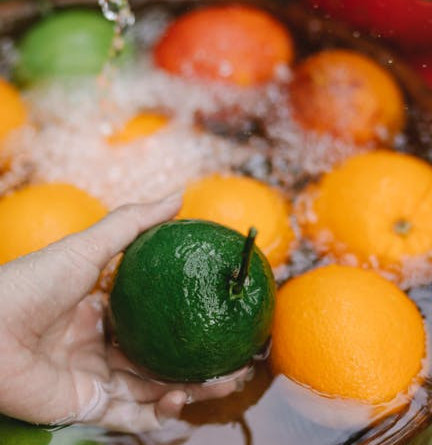Introduction
Human body uses the senses of sight, hearing, smell, touch, and taste as its first line of defence against harm from outside. The senses work together synergistically with the different body systems to accomplish this. Different openings which can allow entry of pathogenic microbes or deadly toxins are all lined up with bodily fluids that contain chemicals that will defend the body against microbes or toxins.
Sight, touch, and hearing might not be effective in detecting the harmful pathogens or toxins. Therefore, it will be left for the senses of smell and taste to do the job in addition to the sixth sense of insight or intuition. The number of senses the human body has always is contested or depends on the context, for example, neurologists would say at least nine extending their classification to the sense of heat (hot or cold), perception of pain, balance, and body awareness.

The same senses are also used by the body to either accept or abstain from certain foods that affect the health of the body. Different food colours are perceived by the body as either ripe, friendly, sweet, or unripe, bitter, spoiled when they discolour. Visual inspection and smell of the food will affirm the acceptance and the taste will allow the oral processing of the food and then swallowing the bolus. This demonstrates that these senses do not work independently but really depend on each other.
What is the physiology of taste?
The development of the senses occurs as early as the first trimester of pregnancy and continues to develop when babies are born. After birth, senses of smell and touch are well-developed but the order in which they develop are touch, taste, smell, hearing, and sight. The taste buds of an unborn child are similar to adults but have more inclination to sweetness than sourness or bitterness flavours. The sense of smell in an unborn child develops together with taste. When born the baby can identify mother by a sense of smell of breast milk. Taste is 80 % smell and work closely through the nose and back of the throat.
The development sense of taste does not seem to be a simple function of either you can taste the flavour or not, but the scientists have also discovered that there are genes which tend to turn on or off the ability to taste certain food flavours. This, in turn, affects the hedonic perception of foods. The different genes and/ or guanine coupled protein receptors for the flavour may include:sweetness -TAS1R2, TAS1R3; bitterness – TAS2R38, TAS2R19, TAS2R31, TAS2R44, TAS2R4, TAS2R5, TAS2R9, CA6; saltiness- TRPV1, SCNN1B, CA6, TAS1R1; sourness – TAS1R1, TAS2R38, and umami – TAS1R3, TAS1R1, GRM1. Individuals who are able to taste a flavour, for example, bitterness are deemed to be either a taster (supertasters or mild tasters, 75 %) or non-tasters (25%).
Tasters will be carriers of dominant gene homozygous (TT, PAV/PAV) or heterozygous (Tt, PAV/AVI) of the trait and the non-tasters a recessive homozygous(tt, AVI/AVI) trait of TAS2R38 mainly. However, the absence of taste can be attributed to a range of factors such as genes, age, physical damage, and illness. The ability to taste is attributed to the interaction of food molecules with the saliva stimulating taste cells on taste buds in the mouth and throat to sense the flavours of the food. The taste buds are in excess of 10 000 at birth for tasters (this number could be lower for non-tasters), and then diminishes after the age of 50.
What is the physiology of smell?
Sensory cells (olfactory sensory neurons) in the nose helps to smell. There are specific neurons for each odour. The flavours reach the sensory neurons either through the nostrils (for volatile flavours) and roof of the throat at the back of the mouth when food is chewed. These channels can be blocked when the nose is stuffed up by flu, cold or coronavirus infections. The flavours cannot reach the neurons and a person can not enjoy food flavour. Eating habits has influence on odour perception.
Mammals have millions of olfactory receptor neurons which can detect and discriminate thousands of odours. In the nasal cavity and in olfactory epithelium, that is where the cellular and molecular mechanism of olfactory transduction. The olfactory receptor genes and pseudogenes are spread over 51 loci in 21 chromosomes. Most odour molecules can be identified by more than one olfactory receptor.
Causes of Loss of Taste
The sense of smell and taste are closely related by the mare fact that the nose, ears, and throat are connected. The primary causes of loss of taste are being a carrier of the recessive gene of tasting the flavours. This usually results in the following taste disorders:
Hypogeusia: the reduced ability to taste bitterness, sweetness, umami, saltiness and sourness
Ageusia: can not detect taste,
Dysgeusia: a condition where a foul, rancid, salty or metallic taste lingers in the mouth
The common causes of these taste disorders include poor oral hygiene and dental problems, surgery of either the nose, ear, or throat, head or neck radiation therapy of cancers, medication such as antibiotics, upper respiratory (flu, COVID-19) and middle ear infections and head injury.
Causes of Loss of Smell
The sense of smell may enhance your delight in aromas of your favourite foods, but as the sense of taste there are also smell disorders:
Hyposmia – the reduced ability to smell or detect odours
Anosmia – inability to detect odours
Parosmia – a change in normal perception of odours, something which usually smells nice becomes foul
Phantosmia – a sensation of odours which are not there.
The common causes of the smell disorders include some of those of the taste (dental problems, surgery of either the nose, ear or throat, head or neck radiation therapy of cancers, medication such as antibiotics, sinus and upper respiratory (flu, COVID-19) and middle ear infections and head injury), ageing, and some condition which affect the nervous system e.g. Parkinson’s disease.
Therapies to improve the sense of taste and smell
The taste disorders can be treated depending on the underlying cause of the disorder. The non-tasters of flavours due to recessive taste gene can be improved regardless of the efforts. At times people who lose their sense of taste due to ear or respiratory infections may have it corrected when the infections clear but it might not be immediately after recovering from the infection. In the event of either hypogeusia or ageusia, here are some tips you can try to make the food taste better and start enjoying eating food again.
Potential Therapies
1. Eat natural or minimally processed fruits and vegetables – these foods have a lot of colours such as red, yellow, orange which brings about an appealing appearance and also contain a lot of vitamin C which boost appetite and starts to bring back the taste of foods.
2. Colours and textures – Prepare foods with a variety of colours and textures – grilled meat will have a lot of meaty flavours as compared to stewed or boiled meat. The meal should have a balance of colours – red, green, orange, white from the protein, carbohydrates and vitamin food sources.
3. Herbs and spices – You could start by just smelling the ones you have used before so that you can build up the databases of the smell again, or adding them to hot foods and sniff the vapours. Use the aromatic herbs and spices add flavour but avoiding salt and sugar.
4. Avoid combination of dishes that can hide flavours and dilute taste. Food preparation from raw ingredients helps with avoiding having hiding flavours.
5. Re-train your senses by smelling different familiar things. Sniff the vapours of herbs and spices more regularly and a bit longer. Build your scent IQ by simply choosing about four foods (roast beef, cheese, coffee, and bananas) and spend at least 2 minutes smelling each of them four times a day for a week, to stimulate sensory neuron receptors.
6. Loss of smell might be due to lack of vitamin B12 – foods such as meat, eggs, dairy product and fish might increase your vitamin intake.

Please note that if these therapies do not improve your condition after 2 – 4 weeks, you will need to see your physician for further assistance. If you are not sure of the way forward after an upper respiratory or sinus infection, seek health advise from your physician.
Conclusion
Besides addressing the underlying cause of loss of taste and smell, foods can be very useful in improving the ageusia and anosmia. If you would like more to learn more on sensory or information on food therapies, email me isabella@foodanddrinkmanufacturing.com


Thank you for sharing this very interesting post with us. Honestly so far I have never heard of the term ‘taste psychology’, and it seems very unusual and interesting to me. It certainly intrigued me the most, so I’ll look for more information. It’s nice to hear something new every day. Great content, all the best !!
Thank you for the comment, I will do an article about taste psychology soon.
Interesting. And sometimes when you think about phantom smells, I wonder if the person that smells the phantom smells just has a hypersensitive sense of smell and really is smelling something. That’s there, just that other people can’t smell it. (Like “super-smellers” that smell what somebody’s cooking two doors down, but nobody else does.)
I had a client such as this, her family called her “psychedelic nose,” until I explained the physiology of it. She was also highly sensitive to phenylethylamine and tyramine. Which goes along with being a super smeller!
Yes, there are people who are super smellers. When suffering from viral infection, it has been reported that they are not affected that much as they still might be able to smell as they can pick low thresholds.